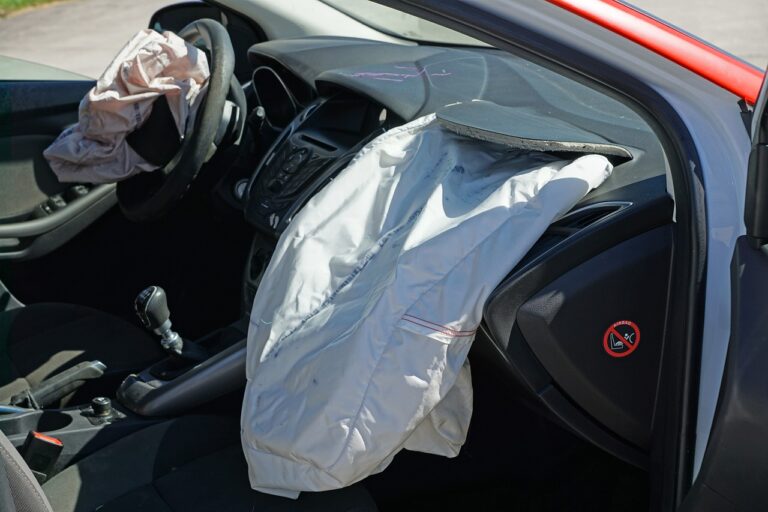Now that we are in the cold months of the year, we are reminded that winter driving and safety are a big deal. Although snow is not as much of an issue here as it may be in the north, Atlanta still has its share of hazardous driving conditions – AND unfortunately less ability to deal with these hazards. When it comes to driving defensively in these conditions, there are a few remarkably helpful tips to protect yourself and your vehicle on the road:
1.) AVOID IT
If you have checked the weather and know that there is going to be ice or snowstorm, just stay home. Hopefully, your place of employment understands that your health and well-being are infinitely more important than making it to work one day of the year. Of course, be respectful when talking with your employer, but do not risk your safety if you believe driving conditions are too dangerous.
2.) GIVE YOURSELF EXTRA TIME
This is a big one. Everyone is always in a rush to get everywhere – people passing each other on the highways, beeping horns when someone takes an extra second at the stop sign, etc. BUT driving a car is effectively driving a 4,000lb hunk of metal at speeds beyond what a person could naturally go. Pairing this speed and weight with dangerous road conditions can be deadly. Avoid unnecessary risks and give yourself an extra 10-20 minutes to get to your destination.
3.) INCREASE YOUR FOLLOW DISTANCE
This should be practiced ALL YEAR – but winter conditions can be unpredictable so they warrant even more precaution. Your following distance behind a vehicle should be either 6-10 seconds behind OR 4-6 car lengths. A common rule is to give a vehicle in front of you 1 car length per 10 miles per hour you are traveling.
The reason is that if someone in front of you has to abruptly stop or slow down you will have adequate time to react and adjust your speed or direction. In practicing this, you may arrive at your destination a few minutes later than normal, but you will be practicing safe driving and protect yourself and your vehicle from harm – which is most important?
4.) DRIVE AND ACCELERATE SLOWLY
Slippery conditions make it difficult for your tires to get grip on the road. Going slow and taking care of any change in speed OR direction will massively improve your driving experience. This tip is true for loose sand and gravel, rain, snow, and ice on the roads. With these conditions comes less tire traction on the roads.
While trying to move from a stop, or if you are trying to turn or accelerate in slippery conditions, it is better to overcompensate than undercompensate. If you can feel that the road is slippery or that your vehicle is not behaving as it normally would due to the road conditions, slowing down will not only allow your vehicle to function properly in those conditions but will give you the extra time you may need to stop or turn to avoid a hazard.
5.) DECELERATE SLOWLY
If you are trying to slow down and you start to slide, make sure you do not lock the breaks. If you pump the breaks, or alternate between pushing the break and coasting, your vehicle can get a better grip on the road. Locking the breaks will just cause the car to slide in an unpredictable direction. Using the spinning tires to grip the road and then hitting the breaks periodically will give your vehicle the required traction to come to a stop.
6.) BRING A BAG OF ICE SALT
When you are driving in winter conditions, you may encounter slippery areas that cause you to get completely stuck – OR – if you park in an open garage or parking lot, ice can build up around your tires and cause your vehicle to spin out leaving you stranded. Salt is very cheap – some stores offering 50 lb bags for under $10
It can be used to get you out of an icy situation, and can also give you the ability to help others that may be in need of assistance. I once had to use salt in a parking garage to get out without sliding out of control at the downhill exit. Unfortunately the next day I learned that a co-worker hit the very same wall earlier hoping that they would have enough traction on the ice to get by.
7.) PREPARE YOUR VEHICLE FOR WINTER
Make sure that if the engine light has been on in your car for several months to finally take it into the shop before bad weather hits. Make sure that your tires have enough tread left, that your breaks are in working and optimal condition, and that your tires are appropriately inflated. Many believe that deflating your tires will help you in the winter – this is not true!
It is recommended to inflate your tires to the designated PSI listed IN THE VEHICLE MANUAL. The manual may indicate that each tire is inflated to the same pressure, or it may designate to have them at different pressures – educating yourself on these things will allow you to better protect yourself while driving.
8.) USE YOUR GUT
As stated in rule #1 – the best way to be safe in dangerous road conditions is to avoid them completely. Unfortunately, this is not always going to be a possible option. If you feel you are in danger or need to avoid certain things when you drive, do not push yourself. Listen to your gut and be careful. When you are on the road, it is not just your life on the line. It is a driver’s responsibility to be safe on the road. All of these are great tips for winter driving, but only you can decide how safe you are willing to be.




